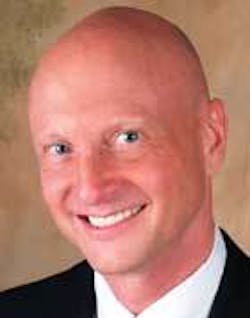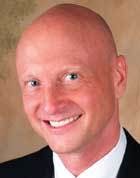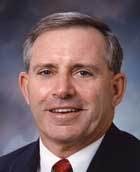Dynamic Speakers
Dental Economics® and the Speaking Consulting Network (SCN) team up to bring you concise messages from some of today’s hottest speakers
Spotlight on speaking: powerful messages delivered with passion
By David Martin Reznik, DDS - SCN Master of Ceremonies
“Spotlight on Speaking” is a hallmark and a highlight of the Speaking Consulting Network annual meeting, now in its 12th year. SCN, created by Linda L. Miles, upholds a philosophy of helping professionals within the profession. What started out as a weekend retreat for a few dental speakers, consultants and authors has grown into an annual conference for both the newcomer and the experienced professional with over 180 SCN members, VIPs and exhibitors in attendance.
There were 22 entries for the six spots in the Spotlight. Each speaker had 10 minutes to deliver a powerful message under the pressure of dual-camera videography and an audience of professional peers, meeting planners, editors, publishers, and exhibitor representatives.
In spite of the time constraint and the peer pressure, those chosen delivered! Each Spotlight speaker received a standing ovation from the SCN audience because each delivered a contemporary and powerful message with professionalism and platform savvy.
We turned the tables on our SOS speakers and challenged them to write their messages in 400 words or less. The result is the following series of up-to-date and to-the-point articles available in print for the first time. Enjoy!
Marketing to your female patients
By Rhonda Savage, DDS
Women schedule not only their own dental appointments, they make their children’s and often their husband’s, too. There are many ways to market your practice to women. Two great marketing books that can help you attract female patients are The Marketing Gurus, by Chris Murray, and Breakthrough Dental Marketing, by Joel Harris.
I’m going to touch on an internal marketing technique you can use to understand the differences in women’s communication style. Your ability to communicate well with people accounts for 85 percent of your success.
There are three key elements to any conversation. Words account for only 7 percent of the message. Tone of voice accounts for 38 percent of the message. Women are much more sensitive to tiny changes in tone than are men. Body language accounts for 55 percent of communication.
People believe the dominant message. The very best message contains the totality of all three elements: the very best message is one that is synchronized. That’s why it’s important you turn toward someone, face them directly when you talk to them, listen clearly to what they have to say, nod and pay attention.
Listening skills build trust, the foundation of all relationships. The more you listen, the more the person trusts you and the more they like you. The more they like you, the more they’ll open up to you. Listening techniques:
- Lean forward and don’t say a word.
- Pause before replying. Pausing raises the other person’s self-esteem.
- Ask questions to clarify: “What do you mean?”
- Feed it back; paraphrase in your own words to show you’re listening.
How can you use these in your practice? Consider a comprehensive treatment planning session at the end of your day. Invite your female patient to bring a friend or spouse. Be unrushed and caring. Listen to her concerns then, discuss your findings from periodontal probings, X-rays and study models. After establishing credibilitiy, present treatment options. Your staff can research insurance benefits ahead of time and supply detailed financial information in print. Women like detailed information; use your CAESY education system, intraoral camera, models and before/after photographs. Spend time with them. Women communicate to build bonds and forge relationships based on mutual values and interests. If they believe you have their very best interests at heart, you will win them over, they will refer their friends and family, and you will enjoy long, prosperous relationships!
Making the transition to insurance-free practice
By Richard A. Huot, DDS
A day doesn’t go by without seeing news about the constantly increasing costs of health care and this nation’s struggle to provide care to all. Currently, health-care expenditures are about 16 percent of the economy, but at the current pace, predictions by the Secretary of Health and Human Services predict that number to rise will 20 percent of the economy in fewer than five years. Dental care constitutes less than 5 percent of that total, and as demands and costs grow, institutions or employers looking for ways to cut costs will see dental insurance and benefits as an easy target. Additionally, this country emerged from a slight recession in late 2001, and is overdue for an economic downturn by historical standards.
All this considered, dentists need to reduce their dependence on dental insurance for a majority of their income, and structure their practice to weather the next economic downturn with a clear vision on the direction they want to take.
Transitioning to an insurance-free practice involves a series of important steps. The staff must receive coordination and communication training, as well as verbal skills to properly answer patient questions. Accounts receivable must be minimized and well collected, with proper third-party payment plans in place before the switch.
Most dental practices overlook how much dental treatment fees get “adjusted” due to plan limitations on some dental plans they participate in. At the year’s end dentists neglect to tabulate that “write-off,” which for all intents and purposes is a marketing fee imposed by various insurance companies. It is critical to include that tabulation in your overall marketing expense budget, and equally important to calculate the “return on investment” you receive for participation by assessing your total production for that year on those plans you participate in.
So take a hard look at your practice’s demographics and financial trends. Are you as busy as you want to be? Is your overhead climbing steadily, despite increasing the hours you treat? Do you have a hard time fitting in a new patient the same week one calls? Asking these kinds of questions will help you decide whether you will make the choice to be insurance-free.
It’s just a thought!
By Marty Wade, DDS
I love it when a thought catches me at just the right time and allows me to see my practice, my staff or myself differently, and spurs me on to positive action. Here’s one: Do you realize that there is one person around whom the entire dental practice revolves? That person is the dentist! If the dentist doesn’t show up, everybody else goes home. Thus, while dentists receive a large portion of the praise for a practice’s success, we also bear the responsibility of bringing personal and professional strength to the practice every day.
Our society doesn’t support the concept of taking responsibility. We need look no further than the Hurricane Katrina debacle to see “blame” defined and “responsibility” disregarded.
We’re not so different in dentistry. We blame our office problems on the accounts receivable, our recall process or the appearance of our waiting room. Then we hire a consultant to correct it! Yet a well-known lecturer and consultant recently told me that, “If a problem exists in a dental office, the dentist has either created it or enabled it.”
Three principles which, when implemented, enable us to return power to our practice are: Tell yourself the truth. Realistically evaluate your circumstances. Act with courage.
Some days we can practice in a façade of normalcy in spite of the personal pressures we feel. We can even work effectively from behind our façade, but only for a time. Oscar Wilde, a famous British playwright, went from being the toast of London to being a miserable, imprisoned pauper. From his cell he wrote, “As terrible as was what the world did to me, more terrible still was what I did to myself.” Too late, he was able to tell himself the truth.
Secondly, we must realistically evaluate our circumstances as did Admiral James Stockdale, a Vietnam POW. Asked how it was that he managed to survive imprisonment when others perished, he responded, “I never lost the faith that I would be victorious while still confronting the brutality of my current situation.” In his book, Good to Great, Jim Collins termed this the “Stockdale Paradox.” We must conduct a realistic evaluation of our own practice circumstances while maintaining the faith that we will be able to overcome any problem.
Finally, having defined the truth about ourselves and evaluated our circumstances, we must act with courage. John McCain defined courage as “the capability for action despite fear.” Daily we help our patients deal with their fear for the sake of improving their health. Can we do any less to improve our practices? It takes courage for our patients to allow us to inject them with local anesthetic, just as it takes courage for us to seek the necessary help to deal with our personal issues. We will both benefit by acting with courage.
Remember, it’s just a thought.
Hope through implant therapy: Expected, not experimental
By Lisa Wadsworth
It is said that our smile defines us and provides us our identity. We greet the world with our smile! Our teeth help us communicate, nourish our bodies, and express affection - all the things that bring joy and wellness. What if we lost our teeth due to trauma, disease, or living with the genetic syndrome of anodontia?
I want to share a secret; 21 years ago I became an implant patient. My personal success with implant therapy has grown into my professional passion. Sharing my knowledge is my mission. Implant therapy improves, rebuilds, and saves lives.
Teeth lost to disease:
When all teeth are lost, the jawbone begins to resorb and over time can lead to spontaneous fractures. Such an occurrence precipitates a medical emergency with life-threatening consequences. Many geriatric patients living with ill-fitting dentures often purposely limit their social engagements out of embarrassment over their inability to speak or chew comfortably. Does this impact their self-esteem and lead to loneliness and despair? Undeniably. As few as four implants can help remedy both of these sad conditions.
Teeth lost to trauma:
Psychological trauma robs us of our sense of identity, and spawns fear and pain both physical and mental. Not only does the patient suffer through the healing phase of the accident, the emotional effects overwhelm families and friends. Implants help to rebuild lives.
Anodontia, genetically missing teeth:
Picture a child sitting in a schoolyard knowing he or she is different from his or her friends. What do all children wait for with great expectations? The tooth fairy! Imagine the remorse of parents who must tell their small children they will never have natural teeth. Once again implants bring hope; the FDA has approved mini implants for use in the developing jaws of children, enabling them to wear dentures until a final treatment plan can be performed. For these children, implants boost self-esteem and bring hope.
As providers we must bring hope and help to our patients in need of implant therapy.
The definition of a secret is “beyond ordinary understanding, mysterious.” I challenge you to believe as I do that implants are not a mystery; they are successful and expected.
Grasp every opportunity to impress ... and you will achieve loyalty
By Fernanda Oliveira, DDS
Start by building rapport. But what is rapport? We know about it, we feel it, but what exactly is it? The New Oxford Dictionary defines rapport as “a close and harmonious relationship in which the people or groups concerned understand each other’s feelings or ideas and communicate well.”
So how does rapport correlate to customer service, the acceptance of optimum care and client loyalty? Did you know that clients often assess their visit to your practice not by the amount of time spent with the doctor, but by the level of understanding they felt emerged from communication?
Good communication requires you to adapt your communication style so you can effectively tune in to each client’s different informational and emotional needs. Your ability to develop rapport depends on this.
Be alert to the impact of non-verbal cues, as they can reveal one’s innermost thoughts and emotions, and be aware of the messages you send inadvertently. Above all, look your client in the eye, smile and use your voice to increase your power of influence.
Because today’s consumers are more discriminating than ever, it is crucial to understand their feelings and ideas. Get to know your clients - ask questions and listen up! Questions are the tools of discovery and help define needs, wants and expectations.
In addition, expressing a sincere desire to understand what your client thinks and feels is one of the greatest compliments you can give them. When treatment planning involves the client, they feel they are getting more of what they want.
Before presenting treatment, think in terms of the client’s perspective. How does it benefit them? Am I addressing their needs and desires? A close and harmonious relationship develops when you are in sync with your client’s expectations.
And how did it begin? With rapport, derived from the French “rapporter,” which actually means, “to bring back.”
By taking the time to communicate well and understand your client’s feelings and ideas, close and harmonious relationships are developed. Use rapport to deliver extraordinary customer service that brings clients back for your superior care.
Banishing the pink elephant
By Mary Holevas
Is there a pink elephant crashing around your office, fumbling through procedures and trumpeting loudly to shatter the calm? Pink elephant behavior is anything that gets in the way of teamwork and breaks down trust.
If you’re like many dental offices, the pink elephant in the room is threatening to destroy everything. Joe Paterno, Penn State head football coach, said, “Whether you’re on a sports team, in an office or a member of a family, if you can’t trust one another there’s going to be trouble.”
Like Paterno, you’re heading a team that must work together. While in football the goal is winning, in your office you want to wow patients with excellent care and customer service. You want to wow employees with a great place to work, and trust is crucial.
The pink elephant is obvious to everyone, yet often ignored, as if no one can see the blushing pachyderm controlling the whole office. Leaders and co-workers tend to avoid conflict, responding with their own pink elephant behaviors, which lead to further breakdowns in trust. Such conduct enables the pink elephant to grow and impact the productivity of the entire team.
In the 20 years that I’ve helped organizations maximize teamwork, trust is always the common denominator in an efficient, well-run office. There is no doubt that people can accomplish more if everyone trusts one another. Two simple steps can help build trust:
1. Ensure that team members take responsibility for their behavior. Are you nurturing pink elephants or are you building an environment in which trust is paramount?
2. Let your team decide what trust looks like in your office. While every team will have its own picture, there are four common threads: an office in which everyone is straightforward, honest and ethical; in which each idea is considered and valued; in which all are treated with respect and dignity; and in which team members keep commitments, meet deadlines and do their best at each task.
About the Authors
For many years it has been Dr. David Martin Reznik’s privilege to be the master of ceremonies and Director of Spotlight On Speaking, a segment of the annual Speaking Consulting Network (SCN). He cannot imagine a successful speaking, consulting, and writing business without networking with the SCN Members. The SCN/Sun Fun Cruise is in February 2009. Visit www.speakingconsultingnetwork.com or call (800) 922-0882.
Dr. Rhonda Savage graduated with honors from the University of Washington School of Dentistry in 1989. Dr. Savage is dedicated to teaching, learning and serving. She is a published author, lectures internationally on clinical dentistry topics, and has a passion for speaking and consulting which enables her to facilitate team growth towards clinical excellence. She is the CEO of Linda Miles and Associates.
Dr. Huot practices full time in Florida, and founded Beachside Dental Consultants, Inc. He regularly lectures and his articles have appeared in a variety of dental magazines. A past president of the Maine Dental Association, he is a member of the USAF Reserve Dental Corps, several dental and honorary organizations, and currently serves as Immediate Past President of the Atlantic Coast District Dental Association in Florida.
Dr. Marty Wade is an oral surgeon passionate about teaching, learning and serving. He founded True North Professional Studies for dentists and staff, and was named Study Club Director of the Year by the Seattle Study Club Network. Dr. Wade has authored and lectured on both clinical and personal development topics, including the bisphosphonate issue. Dr. Wade was named “Top Dentist” by Minneapolis-St. Paul and Minnesota Monthly magazines. Contact him at http://www.lionsgateleadershipcoaching.com.
Lisa Wadsworth is a member of the SCN, ADIA, ADHA and ADAA, and owns her company, Lisa C Wadsworth Inc. With more than three decades of experience in the implant and periodontal arena, Lisa enjoys lecturing and providing coaching for integrating implant therapy into practices, with special attention to the emerging oral-systemic field. Contact Lisa at [email protected].
Dr. Oliveira founded Compass to motivate and empower teams with practical methods. Her passion: promoting the delivery of superior customer service. Her mission: encouraging the cultivation of client relations to achieve loyalty. Her motto: Grasp every opportunity to impress! Contact her at [email protected].
Mary Holevas, MSHR, founder of Cornerstones of Leadership (www.cornerstonesofleadership.com), is a certified coach and business consultant who specializes in helping businesses create work environments that ignite passion, commitment and accountability. With more than 20 years experience in team development, she has worked with everything from Fortune 500 companies to individual dental offices, helping them build an environment that ensures their employees love coming to work. Contact her at maryholevas@ cornerstonesofleadership.com or at (800) 461-0643.






